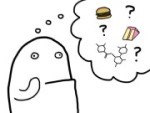|
There's also fluorine. He's the bully who goes around beating everyone up and stealing their lunch money with explosive punches.
|
|
|
|

|
| # ? Jun 2, 2024 15:26 |
|
tentative8e8op posted:I was hoping hexa-deca- would mean sixty, not sixteen DemeaninDemon posted:There's also fluorine. He's the bully who goes around beating everyone up and stealing their lunch money with explosive punches. Fluorine really likes worming its way into any social situation and immediately demands all the attention in the room. e. But fluorine doesn't like leaving its calcium home without a really good reason zedprime has a new favorite as of 15:04 on Apr 21, 2016 |
|
|
|
Ah, okay- I get the idea. I'd ask about nomenclature but from what I understand that is an extremely complicated topic.
|
|
|
|
DigitalRaven posted:the kind of chemistry that requires running shoes. New thread title?
|
|
|
|
Someone just linked me to a very interesting paper. It coined the term "buckybombs".quote:Abstract. Energetic materials, such as explosives, propellants and pyrotechnics, are widely used in civilian and military applications. Nanoscale explosives represent a special group because of high density of energetic covalent bonds. The reactive molecular dynamics study of nitro-fullerene decomposition reported here provides, for the first time, a detailed chemical mechanism of explosion of a nanoscale carbon material. Upon initial heating, C60(NO2)12 disintegrates, increasing temperature and pressure by thousands of Kelvins and bars within tens of picoseconds. The explosion starts with NO2 group isomerization into C-O-N-O, followed by emission of NO molecules and formation of CO groups on the buckyball surface. NO oxidizes into NO2, and C60 falls apart liberating CO2. At highest temperatures, CO2 gives rise to diatomic carbon. The study shows that the initiation temperature and released energy depend strongly on the chemical composition and density of the material. The established explosion mechanism provides guidelines for control of combustion and detonation on the nanoscale.
|
|
|
|
DigitalRaven posted:Someone just linked me to a very interesting paper. It coined the term "buckybombs". quote:The reactive molecular dynamics study of nitro-fullerene decomposition reported here provides, for the first time, a detailed chemical mechanism of explosion of a nanoscale carbon material. Upon initial heating, C60(NO2)12 disintegrates, increasing temperature and pressure by thousands of Kelvins and bars within tens of picoseconds. This is something almost exactly out of my nightmares because this sounds like they've found a way to blast apart what is otherwise one of the more stable molecular structures by means of turning it into a nitro-burning funny car. I mean, this is literally something out of Borderlands.
|
|
|
|
I can't stop laughing at how incredibly terrifying that is. If it were possible to have made it in the 50s-60s, it would have been talked about in Ignition! for sure. There is nothing good that can come of anything described in that abstract and I love and fear it.
|
|
|
|
Luneshot posted:Ah, okay- I get the idea. I'd ask about nomenclature but from what I understand that is an extremely complicated topic. That's not to say that all nitrogen containing compounds are quivering to explode into gas and spectra readings; A strand of DNA will contain many tens of thousands of base pairs, and each base pair will have a handful of nitrogens. Same with proteins, each protein will be made up of several to thousands of amino acids, and each amino acid will have at lest one nitrogen. For the most part, you can beat on DNA and proteins with a hammer while the Anvil Chorus plays in the background and all you'll get is a sore arm. It's all about stability, how much energy you need to put into a system before those high energy bonds break open spilling all their exergonic energy. Hell, there's plenty of very stable organic compounds in our body that have nitro groups on them. The really scary stuff comes around when the nitrogens are bound to things that don't care if the nitrogen leaves or stays. In that case it doesn't take much convincing for it to bust out and take the hood with it. If you're interested in how chemistry nomenclature works, the governing body is called IUPAC, and much of the nomenclature rules are freely available. Generally speaking, names are descriptions of structure. Take hexadecanitrofullerene for example. Hexadeca is 16, nitro is the name for NO2, and fullerene is a specific name for a soccer ball looking orb of carbon. So in this case, we have a carbon ball with 16 nitro groups sticking off of it.
|
|
|
|
DigitalRaven posted:Someone just linked me to a very interesting paper. It coined the term "buckybombs". quote:Fast liberation of chemical energy, resulting in a 3000 K temperature increase within 50-200 ps, provides exciting opportunities for chemistry and engineering. Funny, their names don't sound German.
|
|
|
|
Exciting opportunities in making things break and having to fill out the requisite forms to get replacement graduate students.
|
|
|
|
tentative8e8op posted:I was hoping hexa-deca- would mean sixty, not sixteen It depends on what the molecule is, and if there's room to bond to it. However, there are many people who are working very hard at trying to cram them on to everything and find that limit (sometimes when things go wrong you have to find their respective body parts first). Nitrogen just wants to be freeeeeeee
|
|
|
|
Kinetica posted:It depends on what the molecule is, and if there's room to bond to it.
|
|
|
|
Takkaryx posted:That's not to say that all nitrogen containing compounds are quivering to explode into gas and spectra readings; A strand of DNA will contain many tens of thousands of base pairs, and each base pair will have a handful of nitrogens. Same with proteins, each protein will be made up of several to thousands of amino acids, and each amino acid will have at lest one nitrogen. For the most part, you can beat on DNA and proteins with a hammer while the Anvil Chorus plays in the background and all you'll get is a sore arm. It's all about stability, how much energy you need to put into a system before those high energy bonds break open spilling all their exergonic energy. Hell, there's plenty of very stable organic compounds in our body that have nitro groups on them. The really scary stuff comes around when the nitrogens are bound to things that don't care if the nitrogen leaves or stays. In that case it doesn't take much convincing for it to bust out and take the hood with it. Ah, okay, good to know. I'm more of a physics/astronomy guy so aside from emission line spectroscopy I don't deal much with chemistry. And I figured that it wasn't "all nitrogens are bad"- it's got a lot to do with geometry and bond energies and all that jazz.
|
|
|
|
Luneshot posted:Ah, okay, good to know. I'm more of a physics/astronomy guy so aside from emission line spectroscopy I don't deal much with chemistry. And I figured that it wasn't "all nitrogens are bad"- it's got a lot to do with geometry and bond energies and all that jazz. Oxygens are very electronegative, so they withdraw electron density toward themselves. That significantly weakens the C-N bond which makes nitro compounds much easier to get started decomposing. Azo compounds, which already have N=N bonds looking to break away as N2, are also really good at exploding.
|
|
|
|
darthbob88 posted:Most famously the Klapotke lab in Munich, which holds the record AFAIK with 14 nitrogens and 2 carbons. I'm surprised the whole place hasn't gone klapötke.
|
|
|
|
Deteriorata posted:Oxygens are very electronegative, so they withdraw electron density toward themselves. That significantly weakens the C-N bond which makes nitro compounds much easier to get started decomposing. Azo compounds, which already have N=N bonds looking to break away as N2, are also really good at exploding. Now I'm contemplating the joys of an -NF2 group, does such a thing exist? Or would that just summon Cthulhu without the middle step of actually exploding the stuff?
|
|
|
|
Enourmo posted:Now I'm contemplating the joys of an -NF2 group, does such a thing exist? Or would that just summon Cthulhu without the middle step of actually exploding the stuff? The energy differences in the orbitals of N and F means there's not a lot of resonance stabilization of the NF2 radical. You've also got two more electrons in NF2 versus NO2, which influences the orbital alignments and geometry (trigonal pyramidal versus trigonal planar, respectively). The upshot is that NO2 is a more stable leaving group than NF2, so nitro compounds end up with a weaker C-N bond than difluoroamines. There's some bond weakening with the fluorines, but not as much. It's not just an electronegativity effect as I implied. Sorry for the oversimplification. ETA: On doing some Googling, I see there are some explosives that use NF2 groups. However, the mechanism for decomposition/explosion seems to be the result of an N-F bond breaking. They seem to have problems with stability, though and are rather hard to make. Deteriorata has a new favorite as of 00:38 on Apr 22, 2016 |
|
|
|
tentative8e8op posted:I was hoping hexa-deca- would mean sixty, not sixteen I believe that would be hexacontanitrofullerene. Also I'm pretty sure just typing that word is a war crime.
|
|
|
|
Deteriorata posted:The energy differences in the orbitals of N and F means there's not a lot of resonance stabilization of the NF2 radical. You've also got two more electrons in NF2 versus NO2, which influences the orbital alignments and geometry (trigonal pyramidal versus trigonal planar, respectively). Hey no worries, I like learning poo poo.
|
|
|
|
Keiya posted:I believe that would be hexacontanitrofullerene. Also I'm pretty sure just typing that word is a war crime. This pdf has a lot of fun stuff.   Whee!
|
|
|
|
Deteriorata posted:This pdf has a lot of fun stuff. bring me your nitrogen, yearning to be free
|
|
|
|
Deteriorata posted:This pdf has a lot of fun stuff. Man Plans, and God Laughs
|
|
|
|
I see how you come up with these compounds control H, C N Done.
|
|
|
|
I remember reading that, aside from human creation of nitrogen fertilizer, the only three things on the planet that make nitrogenous compounds that plants love are bacteria that live in a variety of leguminous plants, decomposers melting plant tissue and releasing ammonia in the process, and lightning as a couple million volts of electricity does some DIY in air electrolysis that causes ammonia to appear in rainwater.
|
|
|
|
One thing I notice when reading about these high density explosives is descriptions like "1.8 times as powerful as TNT" which, even if it scales logarithmically, really drives home the difference in magnitude between chemical bonds and nuclear bonds. The wiki page for relative effectiveness factor provides some numbers to play with: octanitrocubane is listed as 2.38 times TNT, the plutonium in Fat Man as 4500, and multistage nukes go up into the millions. The strong force ain't nothin to gently caress with.
|
|
|
|
Sugar has four times the energy density of TNT. Fortunately, it’s rarely released on such short timescales, but when it is… https://www.youtube.com/watch?v=Jg7mLSG-Yws
|
|
|
|
tentative8e8op posted:I was hoping hexa-deca- would mean sixty, not sixteen Lab equipment budgets
|
|
|
|
DigitalRaven posted:Someone just linked me to a very interesting paper. It coined the term "buckybombs". Pfft, only 12 NO2 groups "Prolonged treatment of C60 in benzene with very high concentrations of N2O4 leads to a new polynitro[60]fullerene whose composition was determined as C60(NO2)14 by thermogravimetric analysis. The compound is unstable and deflagrates above 170 °C when heated under nitrogen or in air with the release of a considerable amount of heat as observed by the differential thermal analysis and as measured by differential scanning calorimetry. " tentative8e8op posted:I was hoping hexa-deca- would mean sixty, not sixteen
|
|
|
|
Exactly how much energy would you be looking at, if an N60 decomposed back down into 30N2? Because it sounds terrifying. Also could you theoretically have a nitrogen chain or sheet of unlimited size? Like graphene but without aromaticity. Or would the electron pair tend to make it fold up?
|
|
|
|
ol qwerty bastard posted:Exactly how much energy would you be looking at, if an N60 decomposed back down into 30N2? Because it sounds terrifying. http://www.nature.com/nmat/journal/v3/n8/abs/nmat1146.html quote:Here, we report on an allotropic form of nitrogen where all atoms are connected with single covalent bonds, similar to carbon atoms in diamond. The compound was synthesized directly from molecular nitrogen at temperatures above 2,000 K and pressures above 110 GPa using a laser-heated diamond cell. It's not stable at STP, unfortunately. (or maybe fortunately)
|
|
|
|
ol qwerty bastard posted:Also could you theoretically have a nitrogen chain or sheet of unlimited size? Like graphene but without aromaticity. Or would the electron pair tend to make it fold up? Pretty sure it would become lots of gaseous N2 before you could determine any other properties it might have.
|
|
|
|
One of Klapotke's compounds, I think it was the C2N14 one, went off so cheerfully that they couldn't get any reaction measurements from it at all, also it blew up two spectrometers.
|
|
|
|
ArcMage posted:One of Klapotke's compounds, I think it was the C2N14 one, went off so cheerfully that they couldn't get any reaction measurements from it at all, also it blew up two spectrometers. Whoever their spectrometer supplier is has to be making mad money.
|
|
|
|
ArcMage posted:One of Klapotke's compounds, I think it was the C2N14 one, went off so cheerfully that they couldn't get any reaction measurements from it at all, also it blew up two spectrometers. Hexanitrohexaazoisowurzitane. They had to cool it as far as they could get and then use a non-standard light source because the laser kept blowing it up.
|
|
|
|
xthetenth posted:Hexanitrohexaazoisowurzitane. They had to cool it as far as they could get and then use a non-standard light source because the laser kept blowing it up. Nah. HNHAIW is actually sort of vaguely not unstableish. C2N14 is the one that firmly believed it should not exist.
|
|
|
|
Kalman posted:C2N14 is the one that firmly believed it should not exist. It seems to have the correct opinion.
|
|
|
|
Kalman posted:Nah. HNHAIW is actually sort of vaguely not unstableish. poo poo, you're right. It's an Azidoazide azide, which is what you get when a narcolepsy sufferer tries to copy and paste the last word in prompt molecule disassembly.
|
|
|
|
GWBBQ posted:"The electronic structure calculations locate the local minima for bicyclic N10 and the fullerene analog N60, both as high-energy density species. The bridging NN bond in N10 is quite remarkably strong ( kcal/mol), yet flexible to allow a facile rotation of one ring with respect to the other. This property could permit N10 to serve as a building block for specific clustering into the nitrogen buckminsterfullerene structure." Um, the symbol between those two Ns is in the private use area, what is it supposed to be?
|
|
|
|
Symbol for a double
|
|
|
|

|
| # ? Jun 2, 2024 15:26 |
|
N≡N? That’s U+2261 “IDENTICAL TO”. I don’t think Unicode has anything better for bonds, but if you’re an alchemist you’re covered. Platystemon has a new favorite as of 01:24 on Apr 23, 2016 |
|
|















































